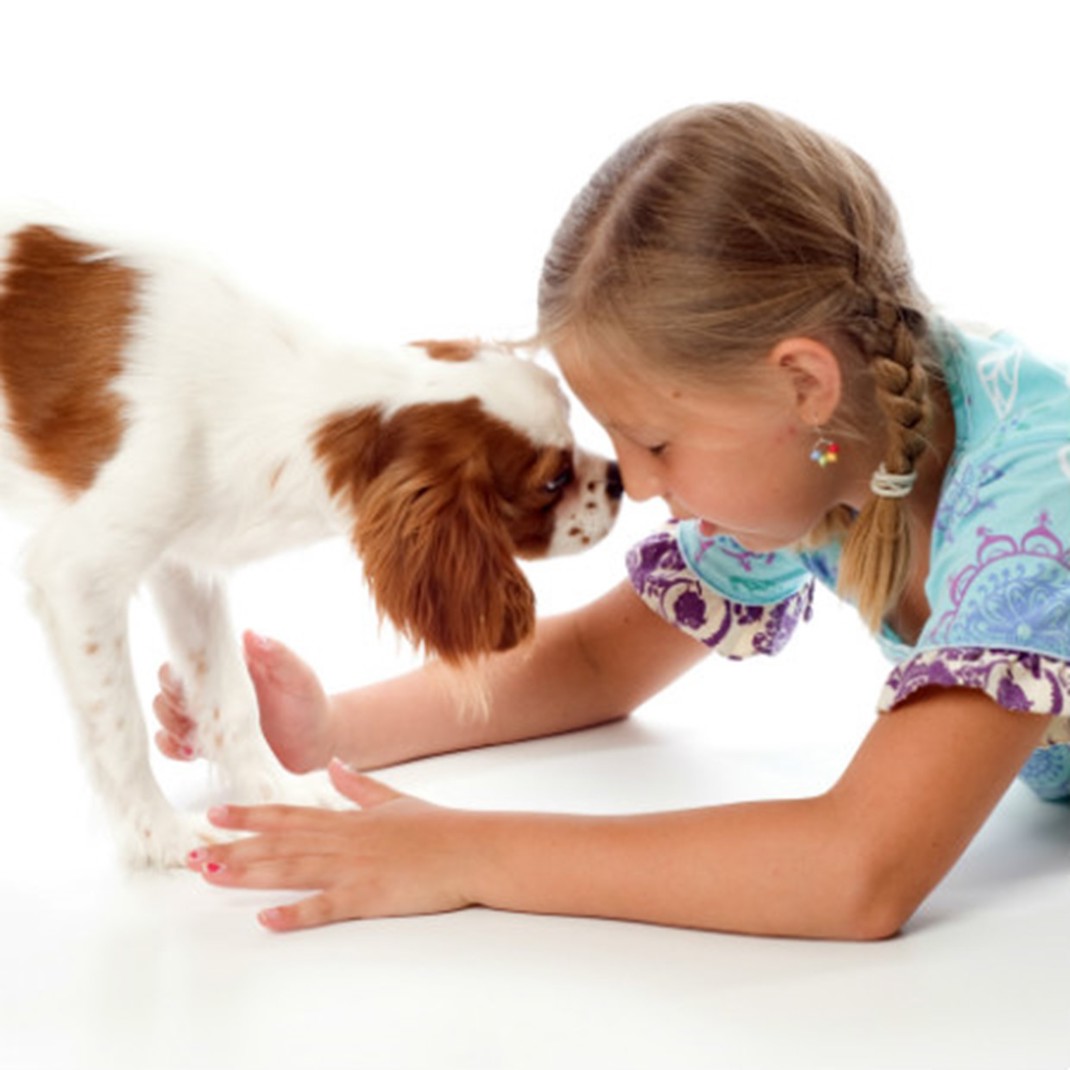Best Dog Breeds for Children & Families

Choosing the ideal dog breed for a family with young children can be a tricky decision as there are so many breeds to choose from! So where do you start? Big dog or small? Long hair or short?
So how do you pick the perfect puppy? There are several important aspects to consider with this decision.
Factors to consider when choosing a family dog
Every family is different, so the best dog to own for your family could be completely different to that of your friends or neighbours. Take into consideration the following factors which
Choose a size appropriate dog for your family
There is no doubt that ALL puppies are gorgeous, but when you’re looking at dog breeds that are going to suit your family, it’s important to look at the specific breed’s adult dog size for a number of reasons:
Consider the amount of space in your home and yard
If you live in an apartment, then for practical purposes, it may be sensible to choose a dog with an adult weight of <15kg, while there is more flexibility on dog breed size if you have a backyard. Regardless of the size of your home or yard, dogs still need stimulation, including play and exercise, so a backyard alone won’t do the trick. Family involvement and time with your furry companion is vital with any breed of dog.
Consider the age of your children
For babies and small toddlers, acquiring any breed of dog, big or small, requires careful supervision whenever your dog is near the child for safety reasons, due to the unpredictable nature of baby and toddler behaviour.
As children get older, having a family dog gives kids a sense responsibility and they can learn to read a dog’s body language and even be involved in the exercise routine with the help of their parents.
Owning a dog can be a wonderful family bonding experience, but it’s important to do your own research on specific breeds. Every family has different needs and while one dog may be perfect for one family, the same dog may not work well in the next.
Research the grooming requirements
Grooming requirements vary substantially between dog breeds with some breeds requiring a haircut every 6 weeks, which can add to the expense and maintenance of owning a dog. Some long-haired or curly-coated breeds require daily brushing to prevent matting so it’s important to discuss the grooming needs with the breeder or a groomer so you know what is involved. Low-shedding dogs may require less vacuuming of hair around the house, but a lot more time and effort in maintaining their coats compared to a short-haired dog breed.
Take into account exercise requirements
Different dog breeds have different energy requirements. If your family has older children into sport and outdoor activities, who wish to be actively involved with dog walking, then choosing a dog with high exercise requirements is ideal. If you have small children then a docile lower energy breed of dog would be a more suitable choice. Looking after a dog can really bring the family together in a positive way but it is a significant commitment and all members of the family need to be on board.
Choose a breed with a good temperament
By far the best puppy breeds for children are those with a friendly temperament. Temperament varies substantially between individuals within the same breed so for a family dog, breeders that select for friendly temperaments are ideal as personality is influenced heavily by genetics. If possible, meeting the parents of the puppy you are interested in can be helpful.
In my opinion, families with children should avoid dog breeds that have traditionally been bred for fighting purposes as breeds vary in both rates of biting and severity1. Dog bites in children are frequent and influenced by the breed-related behaviour of dogs, dog owners, children and parents2 so it’s important to be well-educated in dog behaviour and dog body language and choose wisely.
Some rescue dogs may have been surrendered for behavioural problems including anxiety, which if not managed correctly, can lead to fear-related aggression so again, may not be the best choice for your family, particularly one with small children.
Finding a breeder
Each Australian state has their own organisation which includes registered breeders with the Australian National Kennel Council (ANKC). Click here to find your state's controlling member body listing registered breeders.
In Australia, ‘designer dogs’ or crossing two breeds together have become very popular over the past 10 years for families to obtain their favourite traits from both breeds. An example would be crossing a Poodle with a Labrador, known as a Labradoodle. The result aims to produce a dog with a low-shedding coat (Poodle) that has a friendly temperament (Labrador). These breeders are not listed as registered breeders, which means acquiring one can sometimes be risky, particularly if purchased online without meeting the parents or visiting the facility where the dogs are bred. So, it’s important to ensure you do your research to ensure that the breeder is experienced and puts the welfare of their dogs first. Beware of unregistered backyard breeders who advertise on the internet requesting fast deposits.
Here are some of the best dogs for families with babies, toddlers, young children and teenagers
Below are some examples of the best puppies for kids that I have observed in my experience as a practising veterinarian.
The following suggested dog breeds are just several examples of a long list of suitable puppies for families, so it is important to do your own research too.
Best dog breeds for small children, babies and toddlers (0-6 years old)
In households with children younger than 7 years old, it is worthwhile considering a smaller breed of dog for their first puppy. A high energy rambunctious larger breed of dog may end up bowling children over by accident with their enthusiasm to play and this can be intimidating for young kids or their friends when they come over to play.
The best small puppies for kids under 7, who have never owned a dog before, tend to be calmer, small dog breeds such as:
- Bichon Frise
- Cavalier King Charles Spaniel
- Dachshund
- Havanese
- Papillon
- Poodle
Best dog breeds for kids (6-12 years old)
In this age group, children can be taught how to read dog body language and learn to give the puppy space if required. Examples of suitable breeds in addition to the ones above include:
- Beagle
- Border Terrier
- Chihuahua
- Shetland Sheepdog, or
- Labrador
Best dogs to buy for a teenager (13-18 years old)
Teenagers can handle walking higher energy small or large dog breeds, so there is a wider range of suitable breeds to choose from. The best puppy breeds for kids in this age group in addition to the breeds listed above, include (but are not limited to):
- Bernese Mountain Dog
- Border Collie
- Golden Retriever
- Irish Setter
- Jack Russell Terrier
- Newfoundland
- Boxer
- Vizsla
- Miniature Schnauzer
The most useful advice I can give about choosing the best puppy breeds for kids is to do your own research and carefully consider your own family situation before you decide.
Waiting for the right dog from the right breeder can give you and your family plenty of time to learn about how to ensure your puppy and children have a positive experience from the beginning.
References:
1. Essig G, Sheehan C, Rikhi S, Elmaraghy C, Christophel J. Dog bite injuries to the face: Is there risk with breed ownership? A systematic review with meta-analysis. Int J Pediatr Otorhinolaryngol. 2019;117:182-188.
2. Schalamon J, Ainoedhofer H, Singer G, Petnehazy T, Mayr J, Kiss K, Hollwarth M. Analysis of dog bites in children who are younger than 17 years. Pediatrics. 2006;117:e374-9.



